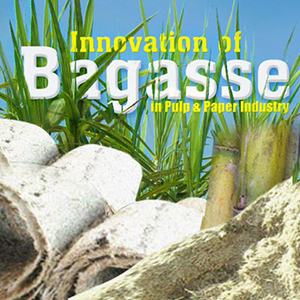Data Analytics in Pulp and Paper: Leveraging Insights for B2B Success

Introduction:
In an era driven by data, the pulp and paper industry is embracing the power of analytics to transform operations and drive B2B success. This article explores how data analytics is revolutionizing the pulp and paper sector, offering valuable insights that can significantly impact decision-making, efficiency, and overall business outcomes.
The Rise of Data Analytics in Pulp and Paper Manufacturing:
The pulp and paper industry is undergoing a transformative shift with the rising adoption of data analytics, marking a departure from traditional manufacturing approaches. Historically, paper production has relied on manual processes and empirical decision-making.
The industry's shift towards a more data-centric paradigm has been catalyzed by the surge of data from diverse stages of the manufacturing chain. The growing volume of data emanating from sensors and production machinery, coupled with advancements in computing power, has created an opportune environment for the integration of analytics within the sector. This transformation is propelled by the industry's acknowledgment of the myriad benefits, encompassing heightened operational efficiency, improved product quality, and more informed decision-making.
Key challenges, such as the need for real-time insights, optimizing production parameters, and minimizing downtime, are being effectively addressed by data analytics. By harnessing historical and real-time data, the pulp and paper industry is not only modernizing its operations but also positioning itself to tackle longstanding challenges and drive B2B success through informed decision-making and strategic planning.
B2B Benefits of Implementing Data Analytics:
Implementing data analytics in the pulp and paper industry provides B2B enterprises with a multitude of advantages, fundamentally reshaping their operations and cultivating success. Initially, data analytics empowers these enterprises to streamline their production processes, resulting in heightened operational efficiency, cost reduction, and overall enhanced productivity. By utilizing predictive maintenance models, companies can effectively mitigate downtime, prolong the life of essential machinery, and achieve significant savings while ensuring uninterrupted production cycles.
Furthermore, data analytics empowers B2B clients to make well-informed decisions through actionable insights into quality control, enabling the timely identification and rectification of potential issues before they influence the final product. Another crucial advantage lies in real-time visibility into supply chain dynamics, facilitating enhanced inventory management, more accurate demand forecasting, and improved logistics planning.
Companies in the pulp and paper industry that have embraced data-driven decision-making have witnessed remarkable success, with tangible outcomes such as reduced waste, improved product quality, and increased customer satisfaction. These real-world examples underscore how data analytics is not just a technological investment but a strategic tool that propels B2B enterprises toward sustainable growth and competitiveness in the dynamic landscape of pulp and paper manufacturing.
Predictive Maintenance and Asset Optimization:
Predictive maintenance, fueled by sophisticated data analytics models, stands as a pivotal game-changer in the pulp and paper industry, particularly for B2B clients seeking enhanced machinery reliability and reduced downtime. By harnessing historical and real-time data, these predictive maintenance systems can accurately forecast when equipment is likely to fail, allowing for timely interventions before issues escalate. This proactive approach not only minimizes unexpected downtime but also extends the lifespan of critical machinery, optimizing overall operational efficiency.
Quality Control and Process Optimization:
In the domain of pulp and paper manufacturing, data analytics stands out as a transformative catalyst, bringing about significant enhancements in product quality, streamlined production processes, and waste reduction for B2B enterprises. The pivotal role of data analytics in augmenting quality control is evident through its continuous monitoring and analysis of various parameters across the production chain. This not only ensures strict adherence to quality standards but also facilitates timely adjustments to prevent defects. Furthermore, insights derived from analytics contribute to the optimization of production processes by identifying inefficiencies and fine-tuning operational parameters, ultimately maximizing efficiency.
Supply Chain Visibility and Demand Forecasting:
Data analytics emerges as a linchpin for B2B clients, providing enhanced visibility into supply chains and offering significant advantages in inventory management and cost control. By harnessing data analytics, B2B enterprises gain real-time insights into every facet of their supply chains, from raw material procurement to distribution channels. This heightened visibility enables proactive decision-making, reducing the risk of stockouts and enhancing overall supply chain efficiency.
Additionally, data analytics assumes a crucial role in precise demand forecasting, leveraging historical data, market trends, and other pertinent factors. This accuracy in forecasting provides B2B clients with the ability to optimize inventory levels, ensuring they meet demand without maintaining excessive surplus. The incorporation of data analytics not only amplifies supply chain visibility for B2B clients but also strategically positions them to navigate market fluctuations, enhance cost-effectiveness, and sustain a competitive edge in the pulp and paper industry.
Data Security and Compliance in B2B Transactions:
In the pulp and paper industry's B2B transactions, data security stands as a paramount concern, prompting a critical examination of the role of analytics in safeguarding sensitive information. As digital interactions become increasingly prevalent, the industry faces challenges related to the secure exchange of data throughout the supply chain. Data analytics plays a crucial role in implementing robust security measures, including encryption, access controls, and real-time monitoring, to protect against potential threats such as data breaches or unauthorized access.
Within the B2B transactions of the pulp and paper industry, data security is a foremost concern, leading to a meticulous assessment of the role of analytics in safeguarding sensitive information. With the growing prevalence of digital interactions, the industry encounters challenges in ensuring the secure exchange of data across the supply chain. Data analytics assumes a pivotal role in establishing robust security measures, encompassing encryption, access controls, and real-time monitoring, to mitigate potential threats such as data breaches or unauthorized access.
Challenges and Considerations in Implementing Data Analytics:
Implementing data analytics solutions in the pulp and paper industry presents B2B enterprises with both opportunities and challenges. Common hurdles include the complexity of integrating analytics into existing systems, ensuring data accuracy and consistency, and addressing potential resistance to change among employees. To overcome these challenges, companies can employ a phased implementation approach, starting with pilot projects to demonstrate value before scaling up. Ensuring a strong data governance framework is also crucial, involving clear policies on data collection, storage, and usage.
Moreover, the provision of employee training programs serves to mitigate resistance and cultivate a culture centered around data-driven practices. Furthermore, it is imperative for B2B enterprises to conscientiously assess data privacy and security measures, ensuring compliance with regulatory requirements and industry standards. Essential components for a successful integration include collaborating with seasoned analytics providers and nurturing cross-functional collaboration within the organization. By addressing these challenges and taking into account these strategic considerations, B2B enterprises operating in the pulp and paper industry can fully unlock the potential of data analytics, propelling operational efficiency and fostering innovation in their business processes.
The Future of Data Analytics in Pulp and Paper B2B Operations:
The trajectory of data analytics in B2B operations within the pulp and paper industry is set for substantial evolution, fueled by emerging trends and technologies poised to redefine the sector. Anticipated to be pivotal, advancements in artificial intelligence (AI) and machine learning (ML) are set to enable the deployment of more sophisticated predictive analytics models and the automation of decision-making processes. The growing prevalence of real-time analytics, facilitated by the Internet of Things (IoT), is expected to offer instantaneous insights into production processes and supply chain dynamics. Additionally, blockchain technology is likely to be harnessed for elevated data security and transparency in transactions.
Moreover, the inclusion of augmented reality (AR) and virtual reality (VR) in analytics platforms is poised to transform training, maintenance, and troubleshooting processes. As data analytics continues to evolve, its focus on promoting innovation within B2B operations is expected to grow more pronounced. Companies adopting these emerging trends position themselves to sustain a competitive advantage, leveraging analytics not just for operational efficiency but also as a driver of strategic decision-making, product development, and sustainability initiatives in the ever-changing field of pulp and paper manufacturing.
Conclusion:
In summary, the incorporation of data analytics stands as a decisive element for success among B2B enterprises in the pulp and paper sector. Drawing on insights derived from analytics, companies can optimize efficiency, trim costs, and thrive in the continually evolving market.







